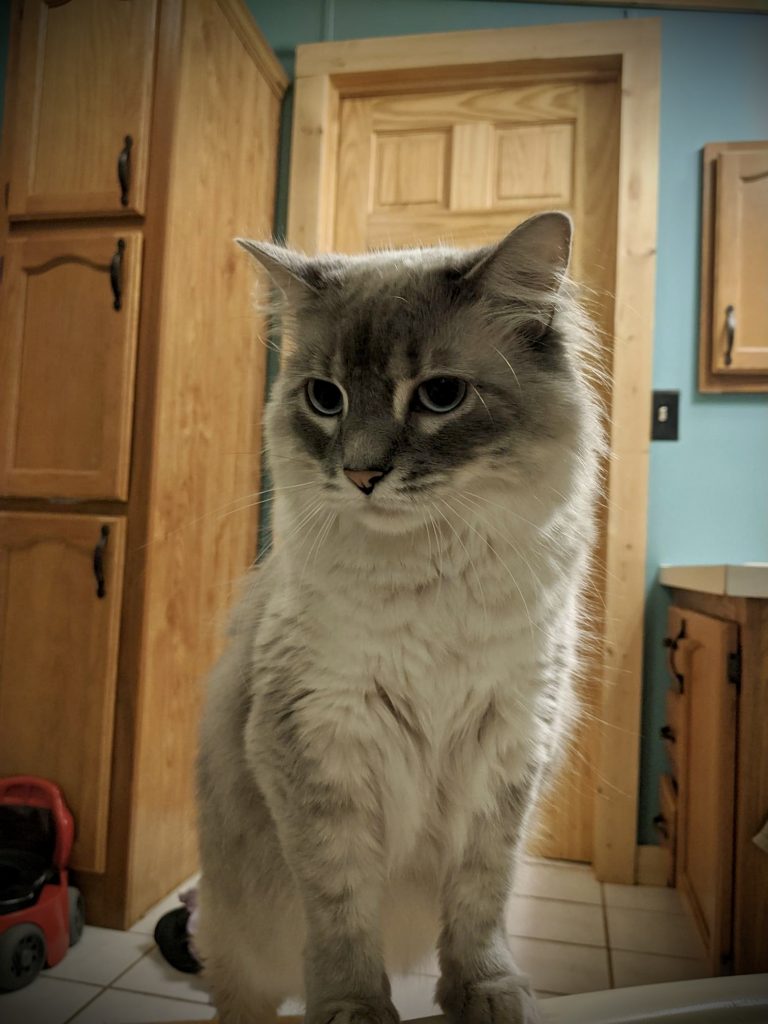By: Talin Seta Shahinian
Ask any cat person their least favorite part of cat ownership, and the answer will probably be the same: litter box duty! It’s a pretty thankless task, but keeping your kitty’s litter box as clean as possible is integral to your cat’s well-being, as a neglected litter box is stressful for cats. As an added incentive to keep up with it, your nose will thank you. However, there are times when there are additional issues, and it’s important to know when your cat’s litter usage is abnormal, as it can be a sign of health or behavioral problems.
What Causes Litter Box Issues?

Litter box issues can arise from many factors. Your cat may not like the litter box’s placement, the type of litter box, or the litter used. They may have had an incident where they were surprised or scared by a child or another animal while in their litter box. Specific health problems can also cause it. If your cat settles into a maladaptive routine, it can be hard to correct for whatever reason. So the best treatment is prevention by making their litter environment as cat-friendly and comforting as possible.
Optimizing Your Cat’s Litter Box Experience
Ensure that the litter box has sides that aren’t too high for your cat to enter and exit. Placement is also important. Ensure that the litter box isn’t closed in on three sides. Don’t use a covered litter box, as it traps odors, and cats like to observe their environment while in their box, as it makes them feel more secure. Don’t place a litter box in a noisy place, such as a laundry room. Never put your cat’s litter box near their food and water bowls, as that’s akin to eating in a bathroom.
Try different litter types until you find one your cat seems to prefer. Start with unscented clumping litter, which is the preference of most cats. Do not overfill the litter box, one to two inches of litter is enough. Most cats do not like plastic litter box liners, so steer clear of them. If you have multiple cats, providing enough litter boxes is key. The rule of thumb is one litter box per cat, plus one extra.
Another factor that can cause cats to eliminate outside their boxes is that their litter box hasn’t been cleaned often enough or thoroughly enough. Scooping the litter multiple times a day is ideal. Once a week, all the litter should be emptied from the box completely; clean the box with plain hot water, unscented soap, and water, or a mild agent like a combination of baking soda and water. Steer clear of scented cleansers or liquid soaps.
When Do Litter Box Issues Require a Vet Visit?
The following signs indicate that your cat’s litter box issues are medically related, and you need to seek veterinary care. You observe your cat entering her litter box but only emptying a small amount of urine and then getting out. This can indicate a UTI (urinary tract infection.)
Another condition, Feline interstitial cystitis, presents with urinary urgency, straining, and inability to produce much urine. Your cat will attempt to urinate frequently but without success. Cats usually experience pain with this condition. They may lick themselves and have blood in their urine. They may eliminate outside their box due to the urgency.
Kidney stones or a blockage can also factor in. Some cats have a small amount of Struvite crystals in their urine, but a problem can occur when they form grit or stones. In this case, they may also be visiting their litter box frequently, but also, your cat may exhibit obvious signs of pain, such a meowing or crying when in the box trying to eliminate. In all these cases, please get your cat in to see a vet as soon as possible. If your regular vet isn’t available, seek emergency veterinary attention, as blockage can be life-threatening.
What’s The Best Way To Clean Up After Accidents and Prevent Future Incidents?

When cleaning up a cat’s elimination accident, Enzymatic cleaners, found at most pet stores, are your best friend. These products break down the urine odors that cause a cat to return to the spot. After cleaning the area thoroughly, you can place some deterrents in the area: tin foil, upside-down carpet runner, or double-sided sticky tape on a carpeted area where a soiling incident occurred can help. Cats do not like those sensations on their paws, helping keep them away from the area. Motion sensor lights in a dark area may also help.
If you live in NW Wisconsin, Purple Cat Mobile Vet Clinic is here to help you keep your cat healthy and happy. We’re a high-quality, high-volume, low-cost spay/neuter clinic. We see cats exclusively. Find information for scheduling on our www.purplecatvet.com website. You can also look on our Facebook page for more helpful information on all things feline!
